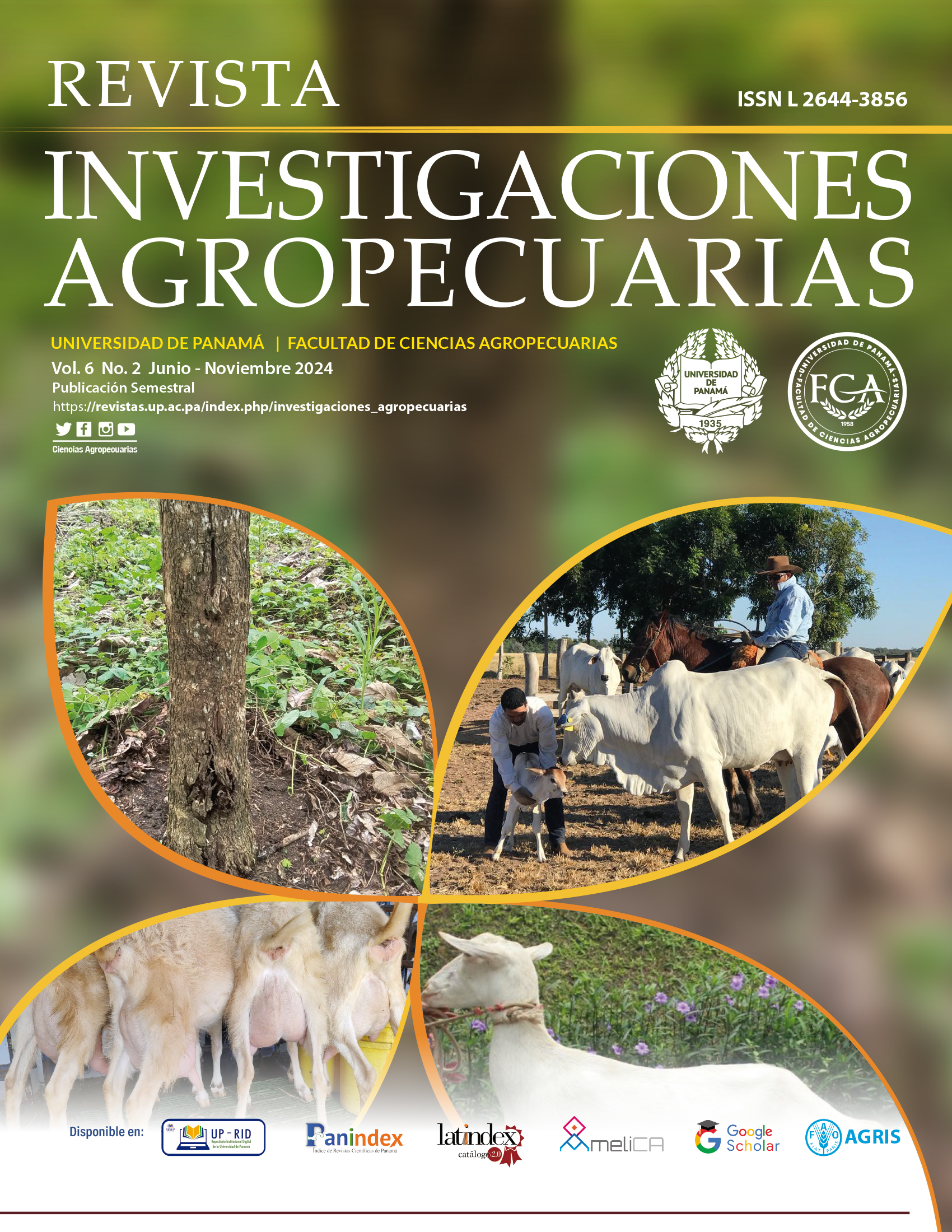

Copyright (c) 2024 Revista investigaciones agropecuarias

This work is licensed under a Creative Commons Attribution-NonCommercial-ShareAlike 4.0 International License.
Teak sapwood rot (Tectona grandis L. f.), is a disease of recent appearance in commercial teak plantations aged between 2-5 years, in the province of Darién. The objective of this research was to identify the causal agent of teak sapwood rot and determine its incidence and severity in five farms with commercial teak plantations located in the communities of Relojera (3), La Moneda and Arizal. On each farm, four sampling units with a size of one hectare each and a population of 625 trees were randomly selected. During sampling, a grid was used to mark diseased trees and their sequence. Depending on the level of affectation observed, an arbitrary scale from 0 to 5 was developed to determine the different degrees of severity observed, classified as follows: 0: healthy trees; 1: trees with cracks; 2: trees with initial basal cancer; 3: trees with advanced basal cancer; 4: tumorization; 5: fall and death of the tree. To identify the causal agent, samples of diseased tissue were isolated and isolated on potato dextrose agar (PDA) medium for the observation of structures and shape of the colony (Slippers, 2009). Lasiodiplodia sp. was identified. as a causal agent of teak sapwood rot, with incidence levels between 24.2 and 28.76%, with severities that ranged between 8.42 and 13.37%. The pathogenicity of the causal agent was verified by inoculating seedlings in a vegetation house following Koch's postulates. The highest percentages of incidence and severity were found in the Arizal farm, with 28.76% incidence and 13.37% severity.